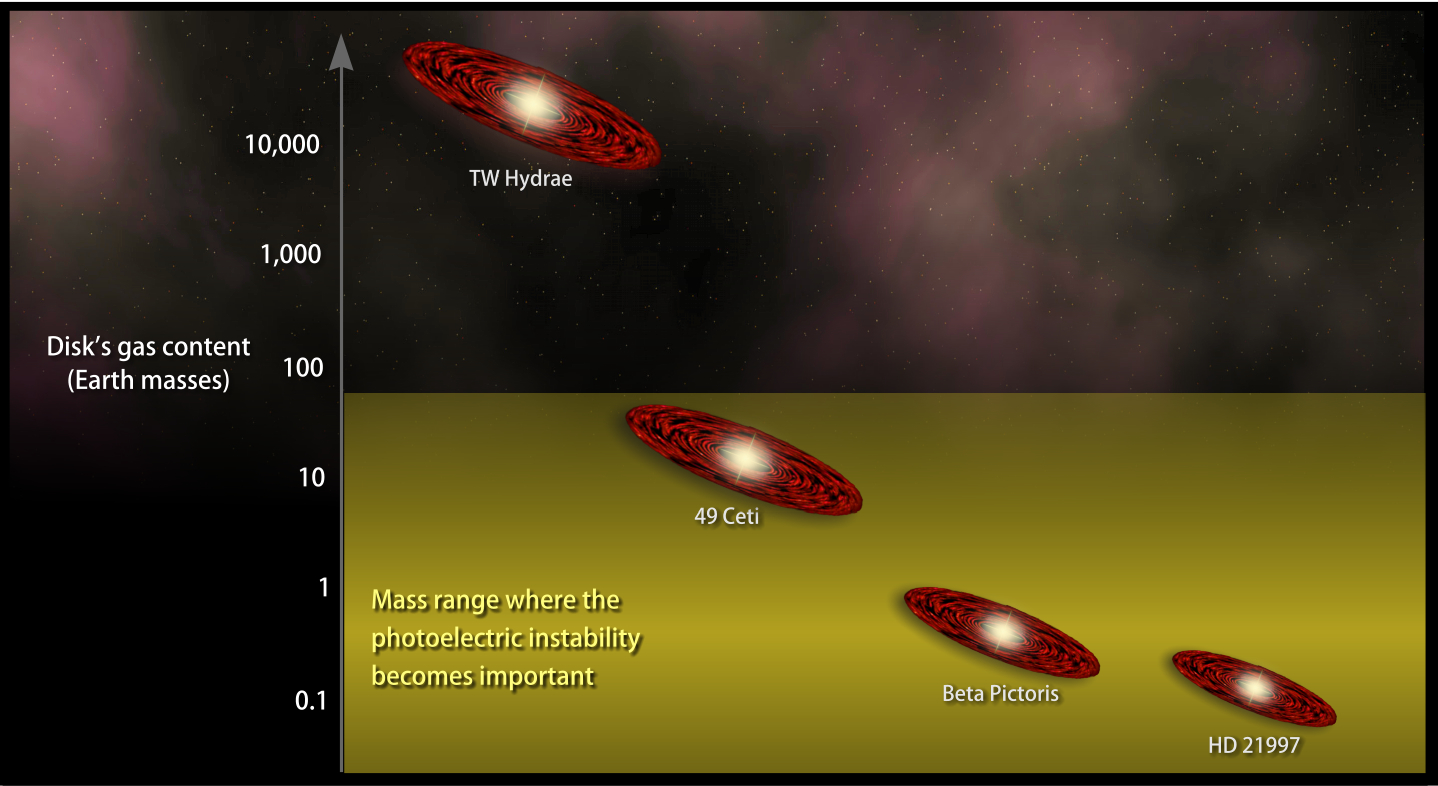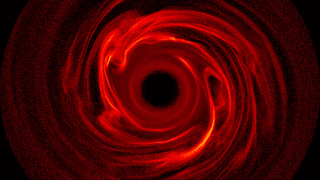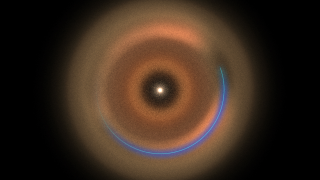Debris Disks Make Patterns Without Planets
Many young stars known to host planets also possess disks containing dust and icy grains, particles produced by collisions among asteroids and comets also orbiting the star. These debris disks often show sharply defined rings or spiral patterns, features that could signal the presence of orbiting planets. Astronomers study the structures as a way to better understand the physical properties of known planets and possibly uncover new ones.
When the mass of gas is roughly equal to the mass of dust, the two interact in a way that leads to clumping in the dust and the formation of patterns. Effectively, the gas shepherds the dust into the kinds of structures astronomers would expect to see if a planet were present.
Lyra and Kuchner refer to this as the photoelectric instability and developed a simulation to explore its effects. This animation shows how the process alters the density of dust in a debris disk and rapidly leads to the formation of rings, arcs and oval structures.

Related
For More Information
Credits
Scott Wiessinger (USRA): Video Editor
Scott Wiessinger (USRA): Producer
Marc Kuchner (NASA/GSFC): Scientist
Wladimir Lyra (Caltech): Scientist
Francis Reddy (Syneren Technologies): Writer
NASA's Goddard Space Flight Center. However, individual elements should be credited as indicated above.
http://dx.doi.org/10.1038/nature12281
Short URL to share this page:
https://svs.gsfc.nasa.gov/11302
This item is part of this series:
Astrophysics Simulations
Keywords:
SVS >> HDTV
SVS >> Simulation
SVS >> Astrophysics
NASA Science >> Planets and Moons
NASA Science >> Universe
SVS >> Exoplanet













